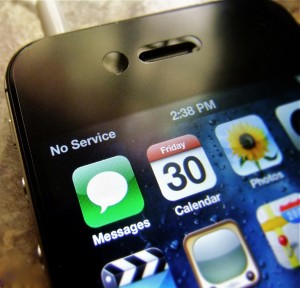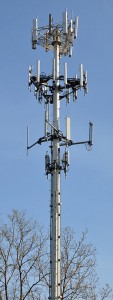Can You Hear Me Now?
– –
 Last month, as you may remember (Weathering The Storm), an ice storm caused a wide-spread power outage in our area. The power had been out for about three hours when Sarah noticed she didn’t have any service on her cell phone; Ryan and I checked ours and we didn’t either. Sarah managed to find one area in an upstairs room where she was able to get a weak and intermittent signal. Sure the power was out, but why wouldn’t we have cell phone coverage?
Last month, as you may remember (Weathering The Storm), an ice storm caused a wide-spread power outage in our area. The power had been out for about three hours when Sarah noticed she didn’t have any service on her cell phone; Ryan and I checked ours and we didn’t either. Sarah managed to find one area in an upstairs room where she was able to get a weak and intermittent signal. Sure the power was out, but why wouldn’t we have cell phone coverage?
After the storm was over I did some research and learned: Cellular services have antennas and base stations that require electricity. The FCC mandates that wireless carriers have backup electric power at MOST cell sites; so this typically means that cell towers have a battery backup system that will last two to four hours – depending on call traffic. In critical service areas there are also emergency generators. So, there are some redundancies built into the cellular network, but they’re limited and will be shortened if there is a lot of extra traffic on the network.
But I’ve been through other power outages and still had cell phone coverage, how come I didn’t this time? If the power outage is only covering a relatively small area, then most likely you’ll be able to connect to a tower outside of your area that still has power. Also, the priority locations for the cell towers are near the major urban areas; if you live in the suburbs or a rural area your cell towers will be further apart and less likely to have backup generators.
 How come XYZ provider, that my friend has, works and mine doesn’t? Though some providers may work in areas that others don’t, all providers have the same vulnerabilities. Their provider may have more backup power, or towers available, or fewer subscribers. But with the increased call volume, that frequently happens during a disaster, all cell network circuits can become congested causing delays, intermittently weaker signals, and no service.
How come XYZ provider, that my friend has, works and mine doesn’t? Though some providers may work in areas that others don’t, all providers have the same vulnerabilities. Their provider may have more backup power, or towers available, or fewer subscribers. But with the increased call volume, that frequently happens during a disaster, all cell network circuits can become congested causing delays, intermittently weaker signals, and no service.
So in these situations cell phones won’t work at all? Even if you can’t make a voice phone call you can still probably send a text message. Texting uses far less bandwidth, has little effect on circuits, and uses very little of your phone’s battery charge – and even if the text can’t go out (or be received) immediately, it is frequently held in the phone’s queue until it can be sent. Battery usage is another topic – but to maximize your battery turn off the ringer and vibration and reduce the screen’s brightness.
What about landlines, won’t they work? If your landline is provided through a traditional phone line you will continue to have service, but only to your phones which are hard-wired into the wall – your cordless phones won’t work (the base station requires electricity). But if your phone service is provided by a cable TV company (like ours is) the digital “landline” is run through a modem that requires electricity; which means no electricity, no phone signal.
Could you plug the modem into a backup power source? I didn’t think of this until afterward; I assume it would work, but I need to test it.
So what’s the solution? I’m not sure I have a good fix for all this yet, but we’ll work on it. This situation does emphasize how much we take instantaneous communication for granted. Make a family plan that includes where to meet in an emergency, and where to leave a note if you have to leave before others arrive. Take some time and think about how you could communicate with your loved ones if cell phones weren’t an option – we did it for a lot of years, do we still remember how?
